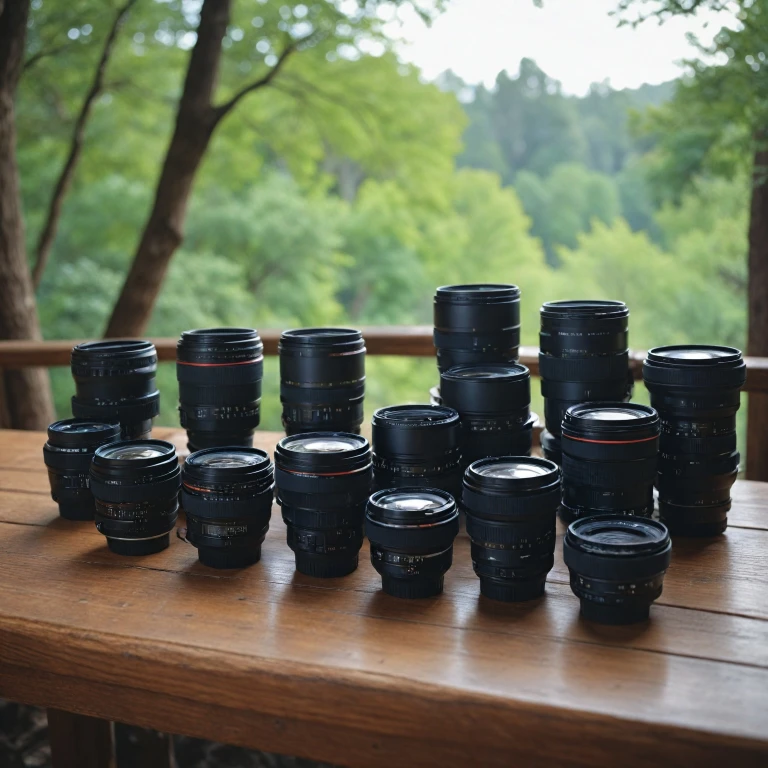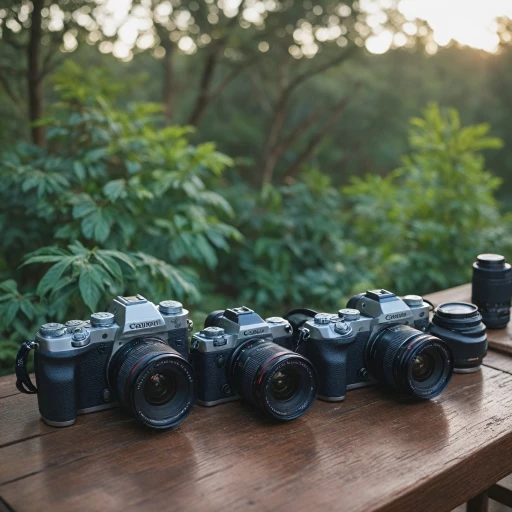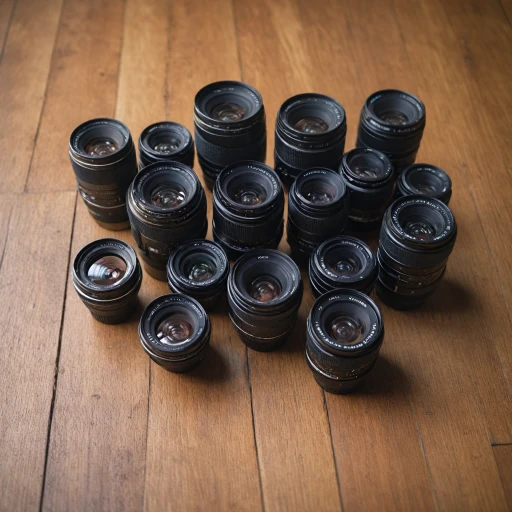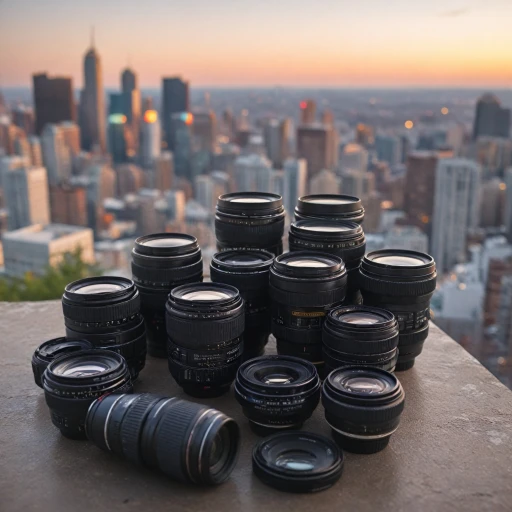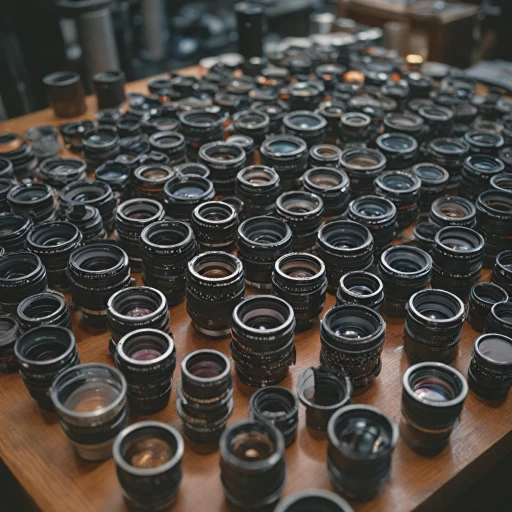
Understanding Telephoto Lenses
The Dynamics of Telephoto Lenses
Telephoto lenses are a pivotal component in photography, offering photographers the ability to zoom in on distant subjects with clarity and precision. Unlike a standard or wide angle lens, a telephoto lens enables you to magnify details that might otherwise be out of reach, bringing far-off subjects into sharp focus. This makes it an indispensable tool for capturing wildlife, sporting events, and any scenario where the subject isn't easily approachable. Telephoto lenses are designed with long focal lengths, which enables them to compress the depth field. This characteristic results in a unique perspective where the background appears closer to the subject, creating a more dramatic image. Whether you are shooting with a Nikon or another brand, understanding the intricacies of your telephoto lens' focal lengths will greatly enhance your photography results. One aspect crucial for getting the best out of these lenses is mastering the balance between shutter speed and ISO settings. As telephoto lenses have a narrow field view, maintaining image quality while avoiding camera shake becomes paramount. Using a wider aperture, typically found in telephoto zoom lenses, can help when shooting in low light conditions or when a faster shutter speed is required to freeze motion. Each setting adjustment interacts with another, affecting the final image. For those seeking to optimize their telephoto lens for varied focal needs, considering different types of telephoto zoom lenses can be worthwhile. Options range from versatile zoom lens configurations to super telephoto lenses designed for extreme distances. Delving into these options can help you find the perfect lens for your photography needs, ensuring the ideal balance of focal length, image quality, and versatility. Ultimately, a good understanding of the telephoto lens will solidify your ability to adeptly manage its powerful zoom capabilities. This will prove invaluable as you explore other enhancements like lens adapters and teleconverters, boosting your ability to capture awe-inspiring shots.Teleconverters: Boosting Your Lens Power
Enhancing Optical Magnification with Teleconverters
Teleconverters, often referred to as "extenders," play a pivotal role in boosting the power of a telephoto lens, making them a valuable accessory for any avid photographer. These compact devices effectively increase the focal length of your existing lens, giving the appearance of super telephoto capabilities without the need to purchase a brand-new lens.
The basic principle that guides teleconverters revolves around magnifying an image by altering the optics of the lens without changing its physical length. This enhancement allows you to bring distant subjects closer while maximizing the field of view. Commonly available in variations like 1.4x, 1.7x, and 2x, they multiply the original focal length by their respective power. For instance, attaching a 2x teleconverter to a 200mm lens results in an effective focal length of 400mm.
Another advantage lies in their ability to maintain the qualities and characteristics of your lens. Although the image may undergo slight degradation in quality, using high-caliber teleconverters ensures minimal loss—striking a balance between convenience and clarity. The key challenge, however, is that the maximum aperture of the lens decreases, potentially affecting image quality by necessitating adjustments to ISO or shutter speed. Such considerations are vital to maintaining the desired depth of field and focus.
It's worth noting that teleconverters are often designed to work best with lenses from the same brand. For example, a Nikon teleconverter will typically perform optimally with Nikon telephoto lenses, preserving the compatibility of advanced features like image stabilization. This compatibility ensures better autofocus performance and accurate metering, critical factors for successful shooting.
For an in-depth understanding of how teleconverters can be integrated into your photography setup, you may want to explore the detailed specifications of compatible lenses. The Nikon 500mm f4 lens offers insights into maximizing teleconverter use for enhancing your photography experience.
Extending Reach with Lens Adapters
Maximizing Your Focal Length with Lens Adapters
For photography enthusiasts keen on expanding their reach, lens adapters present a practical solution. These versatile tools allow users to interchange lenses between camera systems, potentially enhancing the capabilities of your telephoto lens without the hefty investment of a brand new lens. Lens adapters are particularly beneficial when you're working with various focal lengths, offering flexibility with your Nikon or any other camera you might own. What makes these adapters compelling is their ability to modify the field of view and alter the focus range, thus providing a wider angle or a more confined image within the telephoto zoom category.- Cross-Compatibility: Utilizing a lens adapter can transform a typical wide-angle lens into a telephoto powerhouse, offering advantages whether you're shooting wildlife or portraits from afar.
- Focus and Image Quality: While adapting lenses, there's an essential balance between maintaining focal length and preserving image quality. The adaptation process can sometimes affect the depth field or the sharpness, essential factors for high-quality photography.
- Specialized Features: Many adapters now come equipped with advanced features like adjusting the maximum aperture or controlling the shutter speed directly through the camera body, which adds convenience and control to your shooting experience.
Exploring Aftermarket Lens Options
Exploring Third-Party Lens Options
Venturing into the world of third-party lenses can significantly broaden your photography experience, particularly in the realm of telephoto lenses. As you delve deeper into options beyond the original camera manufacturer's offerings, you might discover numerous lenses designed to push your photography to new heights, without the hefty price tag that often accompanies branded lenses. For a photographer who aims to extend focal lengths without compromising too much on the budget, third-party manufacturers offer a promising avenue. These companies create lenses that cater to various photography needs—ranging from wide-angle to super telephoto zoom lenses. They provide enthusiasts and professionals alike with lenses that match different shooting conditions, be it sports, wildlife, or everyday photography. The significance of third-party lenses shines when you consider the variety of focal lengths and features available. Many of these lenses incorporate advanced optical technology to enhance image results, enabling you to focus precisely on your chosen subject and achieve sharpness across the field of view. Brands like those compatible with Nikon often produce lenses that satisfy both specialty requirements and general photography, all while maintaining competitive price points. When selecting these lenses, it is crucial to verify the quality of the optics. The construction and glass elements in third-party lenses should meet or exceed quality expectations to ensure that image quality isn't compromised. Thoroughly researching user reviews and expert opinions can illuminate whether these lenses provide the desired depth of field and maximum aperture performance for your photography style. In summary, exploring third-party lens options expands your lens selection, allowing for versatile usage with varying focal lengths. Whether it's a telephoto zoom or wide-angle lens you're after, these options could offer the field view expansion and focus precision needed for superior photo quality, enhancing your telephoto lens capability in remarkable ways.Impact of Lens Quality on Image Results
Influence of Lens Construction on Captured Details
The quality of a lens significantly impacts the resulting image, a vital consideration for any photography enthusiast looking to enhance their telephoto zoom capabilities. Telephoto lenses, known for their ability to bring distant subjects closer, rely heavily on their construction quality to deliver sharp, vibrant images.
High-quality lenses often incorporate superior glass materials and precise engineering to minimize distortion and aberrations. This enhances the sharpness and clarity of photographs, ensuring the finer details are well-preserved and vibrant. When the focal length increases, maintaining image quality becomes even more critical, making the choice of lens paramount for achieving the best photography results.
Professional series lenses by brands like Nikon often feature advanced coatings and elements that enhance image quality by reducing flare and improving contrast. This can be particularly beneficial when shooting at wider focal lengths, where the depth of field and field view need to be crisply captured.
Another crucial aspect is the maximum aperture of a lens. A larger maximum aperture allows more light to reach the camera sensor, enabling better performance in low-light conditions and offering more control over depth of field.
For those using adapters or teleconverters to boost their photo gear's range, the quality of the additional equipment also plays a role in the final image output. Ensuring compatibility and reliable connection between the telephoto lens and converter is key to reducing potential loss in image sharpness.
Furthermore, when selecting zoom lenses, especially those designed for wide angle photography, it's important to consider image stabilization and fast autofocus features. These can help in capturing sharp images of fast-moving subjects without compromising speed, thanks to faster shutter speed adjustments.
In conclusion, understanding the impact of your lens's build on your camera’s performance will guide you in selecting lenses that best suit your shooting intentions and enhance your overall photography experience.
Practical Tips for Using Enhanced Lenses
Making the Most of Enhanced Lens Techniques
Using enhanced lenses in digital photography involves more than just adding a teleconverter or adapting additional glass. It’s about mastering the craft to truly benefit from the extended capabilities these lenses offer.- Focus on Stability: When working with super telephoto or telephoto zoom lenses, stability is key. Ensure your camera is mounted on a sturdy tripod to avoid any camera shake that could affect image quality. Consider using a remote shutter button to minimize vibrations.
- Mastering the Pro ISO Settings: Adjusting your camera's ISO settings can greatly impact your telephoto images, especially when shooting in low-light conditions. A higher ISO setting allows more light to be captured, but be cautious of noise which can degrade image quality.
- Balancing Shutter Speed and Focal Length: The longer the focal length, the faster your shutter speed should be to capture sharp images. A general rule of thumb is to use a shutter speed faster than the reciprocal of the focal length. For instance, with a 300mm lens, aim for a shutter speed faster than 1/300 second.
- Utilizing Maximum Aperture: Understanding the maximum aperture of your lens is crucial, especially when shooting subjects at varying distances. A wider aperture (lower f-stop value) will allow more light to hit the camera sensor, which is beneficial for achieving a shallow depth field.
- Exploring Wide Angle Options: Don’t forget to consider using wide angle lenses or wide focal lengths as part of your photography arsenal. These are perfect for shooting expansive fields view while maintaining rich detail across the frame.
- Using Lens Best Appropriately: Knowing when to use a particular lens or lens best option is vital for different photography scenarios. Whether you’re capturing wildlife at a distance or focusing on close-up portraits, the right lens choice will enhance focal detail and image accuracy.
